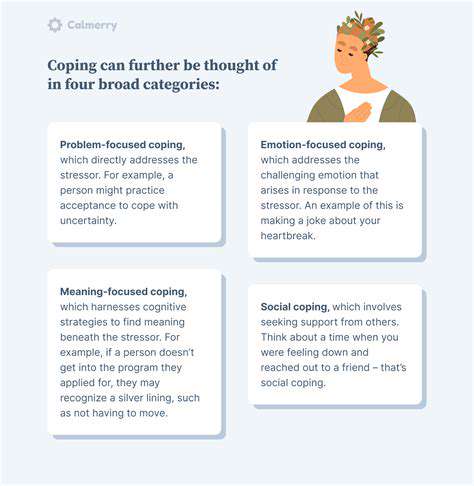Exploring the Relationship Between Anxiety and Mental Health
Index
- Anxiety typically manifests as excessive worry, restlessness, and difficulty concentrating.
- Somatic symptoms may include muscle tension and palpitations.
- Anxiety states can significantly affect work efficiency and social quality.
- Genetic predispositions and environmental stressors jointly contribute to the onset of anxiety disorders.
- Cognitive behavioral therapy has been shown to have a significant effect on alleviating anxiety symptoms.
- Lifestyle adjustments can effectively enhance psychological resilience.
- Social support systems can reduce feelings of loneliness in anxiety sufferers.
- Medication provides symptom relief for most patients.
- Mindfulness practices help improve emotional management and stress regulation.
This summary focuses on analyzing the complex manifestations of anxiety disorders and integrated coping strategies.
Specific Manifestations of Anxiety
Identifying Typical Symptoms of Anxiety
Anxiety can take many forms, and sometimes it is even difficult for those affected to recognize it accurately. Common signs include persistent worry, unexplained irritability, and difficulty focusing. According to research published in the Journal of Anxiety Disorders, different subtypes of anxiety disorders (such as generalized anxiety disorder or panic disorder) show significant differences in symptom manifestations.
Somatic symptoms often accompany psychological distress. Many patients report experiencing muscle tightness, rapid heartbeat, or digestive discomfort. Notably, about 70% of anxiety patients exhibit somatic symptoms, indicating that treatment should adopt an integrative approach that addresses both mind and body.
The Deep Impact of Impaired Life Functioning
The destructive power of anxiety goes far beyond emotional distress. Data from the National Institute of Mental Health indicates that anxiety disorders lead to over $42 billion in economic losses in the United States each year, primarily due to decreased work efficiency and increased healthcare spending. This phenomenon reveals that anxiety issues have become a significant socio-economic burden.
Social withdrawal is another warning sign. Patients may avoid social situations due to fear of negative evaluations; this avoidance behavior can trigger a vicious cycle—feelings of loneliness increase anxiety levels, which in turn leads to more severe self-isolation.

Causes and Risk Factors Analysis
Genetic inheritance plays an important role in the development of anxiety disorders. Research shows that people with anxiety disorder in direct family members have a significantly increased risk of developing the condition. However, it must be clarified that genetic susceptibility must work in conjunction with environmental stressors to trigger symptoms. For example, childhood trauma or major life changes can serve as triggers.
Disruption of circadian rhythms shows a bidirectional relationship with anxiety symptoms. Poor sleep quality may exacerbate anxiety, while anxiety states can lead to difficulty falling asleep, creating a difficult-to-break vicious cycle. Therefore, establishing a regular daily routine becomes an important intervention measure.
The Profound Impact of Anxiety on Mental Health
The Cumulative Effect of Symptoms
Anxiety rarely exists in isolation. Clinical statistics show that about 60% of patients with anxiety disorders also meet the diagnostic criteria for depression. This comorbidity complicates treatment efforts significantly, necessitating comprehensive intervention strategies that address both disorders.
Career development setbacks represent another area of concern. Continuous distractions and difficulties in decision-making can lead to increased workplace errors, potentially triggering employment crises. This pressure can further intensify anxiety, creating a destructive feedback loop.
Interpretation of the Biopsychosocial Model
Modern medicine employs a three-dimensional model to analyze the causes of anxiety:
- Biological factors: Serotonin system dysfunction, hyperactivity of the amygdala.
- Cognitive psychology: Catastrophic thinking patterns, high alertness tendencies.
- Social environment: Lack of support systems, prolonged chronic stress.
Research on Coping Strategies indicates that aerobic exercise three times a week can reduce anxiety symptoms by 40%. This confirms the significant role of lifestyle interventions in anxiety management.
Practical Coping Strategies and Treatment Advances
Stepwise Intervention Plans
Modern anxiety disorder treatment emphasizes a tiered intervention approach:
- Primary intervention: Mindfulness practices, breathing exercises, exercise therapy.
- Secondary intervention: Cognitive behavioral therapy, group psychological counseling.
- Tertiary intervention: Pharmacotherapy (SSRIs/SNRIs), transcranial magnetic stimulation.
Breakthroughs in neuroimaging research in 2023 show that through real-time fMRI feedback training, patients can learn to self-regulate amygdala activity. This new type of biofeedback therapy offers new hope for treatment-resistant patients.
Building a Social Support Network
Establishing an effective support system consists of three dimensions:
- Family support: Training family members in anxiety management.
- Workplace support: Adjustments to flexible working arrangements.
- Community support: Peer support groups for individuals in recovery.
It is particularly important to note that certain somatic symptoms may be physiological manifestations of anxiety. Regular check-ups can help rule out organic diseases, preventing misdiagnosis and mistreatment.